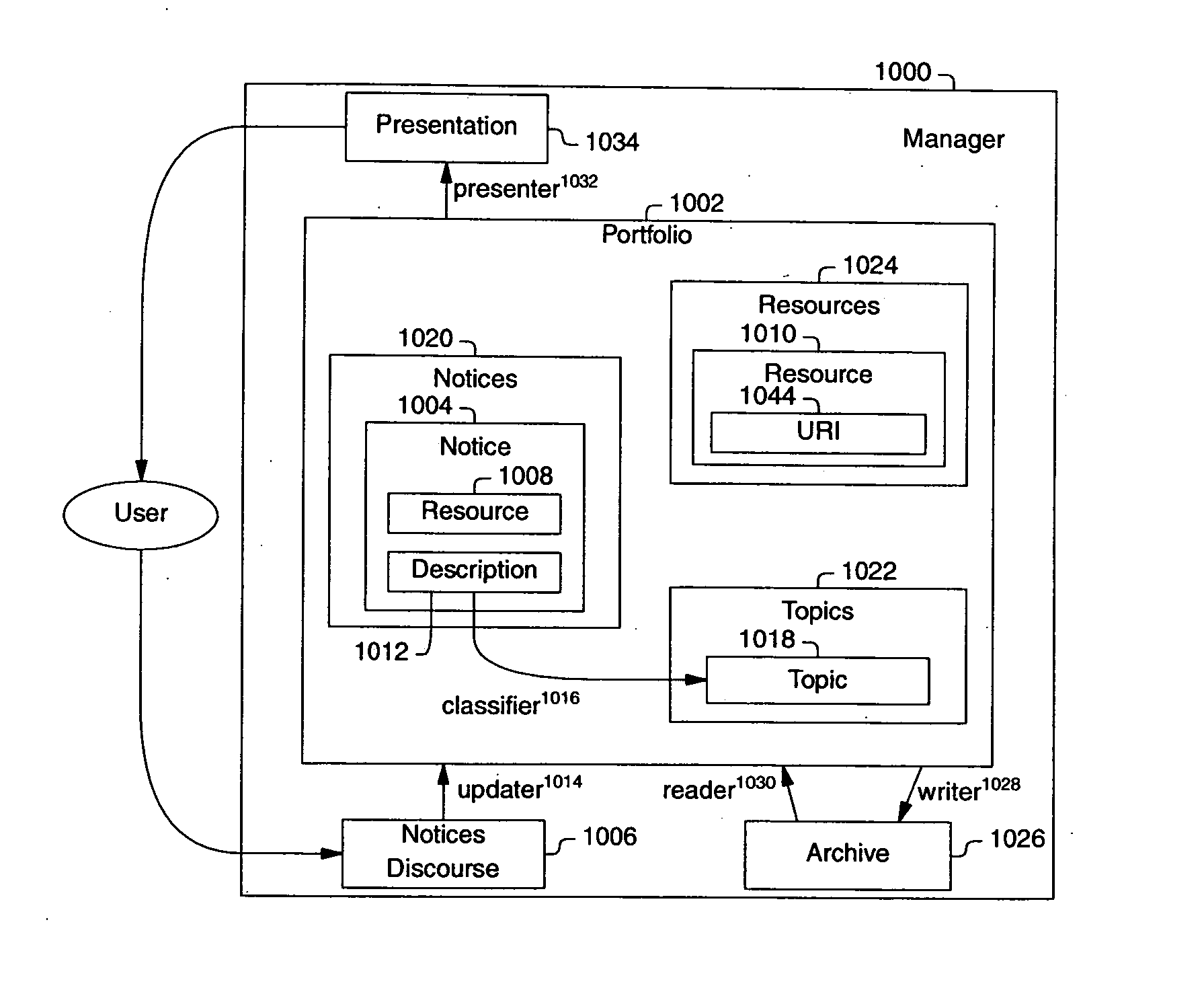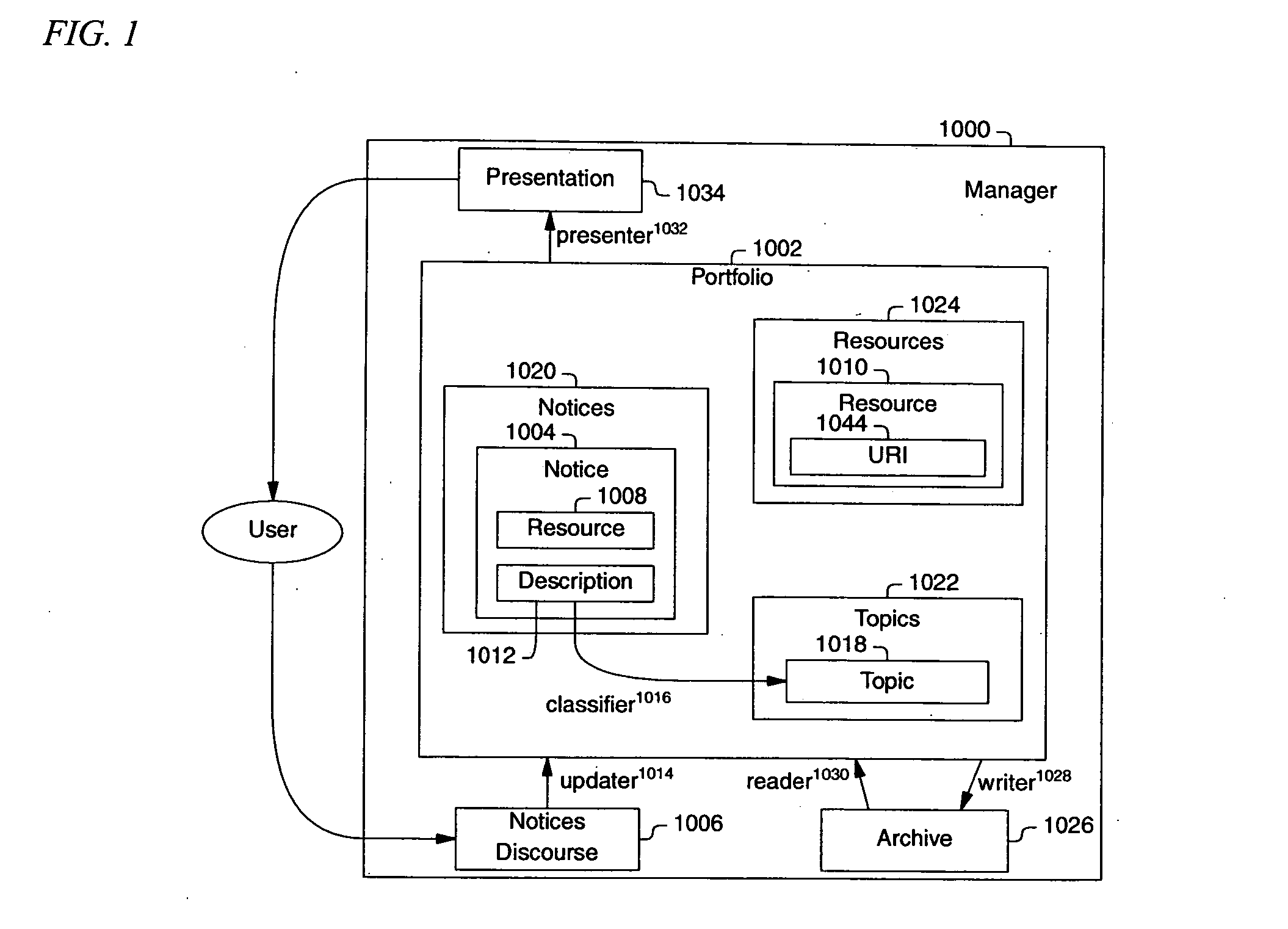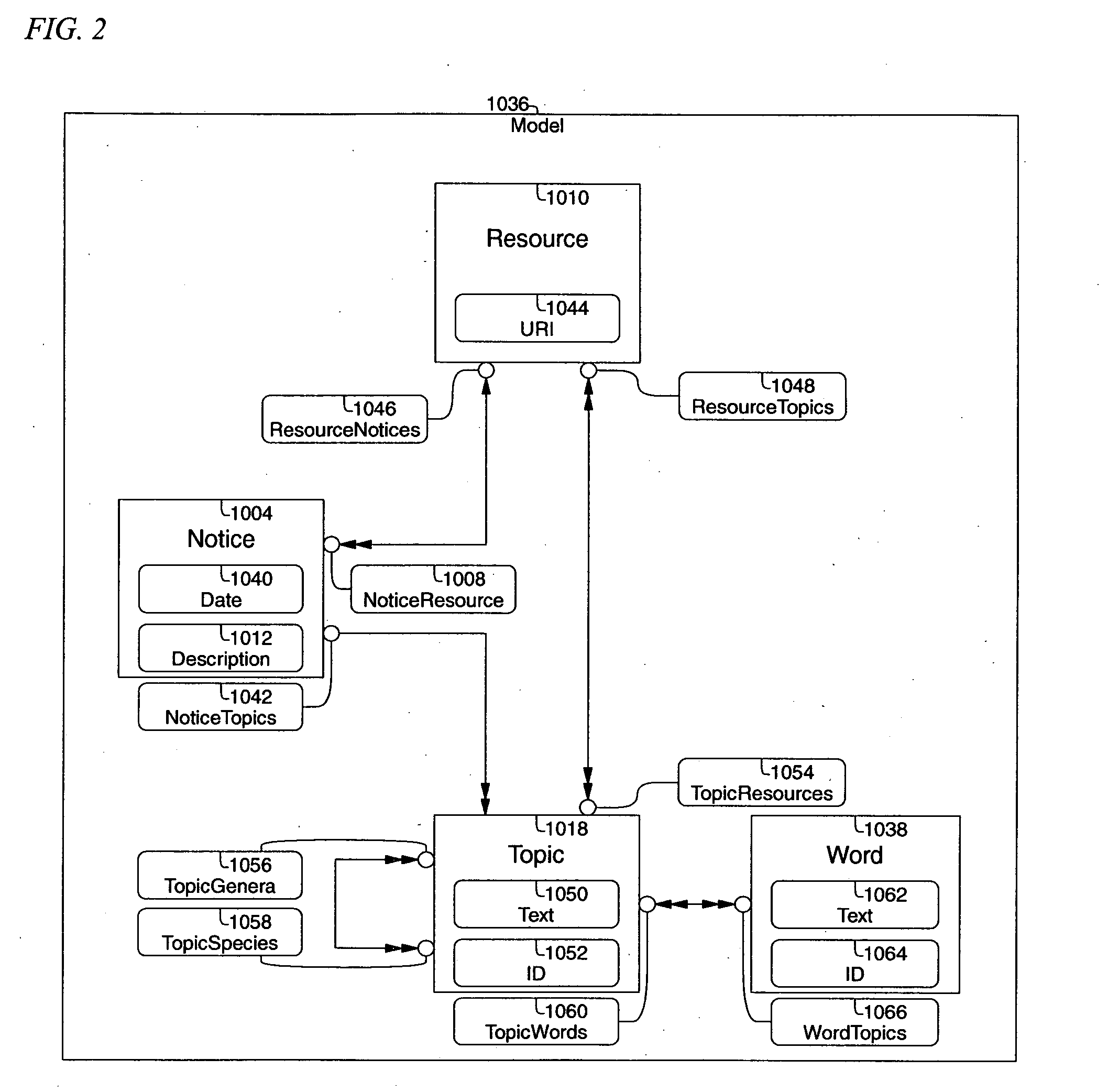Web Bookmark Manager
a bookmark manager and web bookmark technology, applied in the field of web bookmark management, can solve the problems of sacrificing the capability for user-specific personalization, affecting the efficiency of automatic processing, etc., and achieves the effect of reducing the number of bookmarks, and reducing the number of users
- Summary
- Abstract
- Description
- Claims
- Application Information
AI Technical Summary
Benefits of technology
Problems solved by technology
Method used
Image
Examples
Embodiment Construction
1 Terminology
[0042] Various embodiments of the web bookmark manager may be provided in various configurations of hardware and software. A particular configuration of hardware and software is denoted a platform. Many particular aspects of an embodiment are determined by the particular characteristics of the platform. However, certain aspects of the web bookmark manager are independent of platform; to precisely characterize these aspects requires a platform-independent terminology: instance, category, feature, and model, as defined below.
[0043] An instance represents a particular element; an instance is characterized by its membership in one or more categories. A category represents a set of instances which have features in common. Examples of categories in the bookmark manager include notices, topics, and resources. A feature represents a common aspect of the instances of a category. The collection of features shared by the instances of a category are characteristic of the categor...
PUM
 Login to View More
Login to View More Abstract
Description
Claims
Application Information
 Login to View More
Login to View More - R&D
- Intellectual Property
- Life Sciences
- Materials
- Tech Scout
- Unparalleled Data Quality
- Higher Quality Content
- 60% Fewer Hallucinations
Browse by: Latest US Patents, China's latest patents, Technical Efficacy Thesaurus, Application Domain, Technology Topic, Popular Technical Reports.
© 2025 PatSnap. All rights reserved.Legal|Privacy policy|Modern Slavery Act Transparency Statement|Sitemap|About US| Contact US: help@patsnap.com



